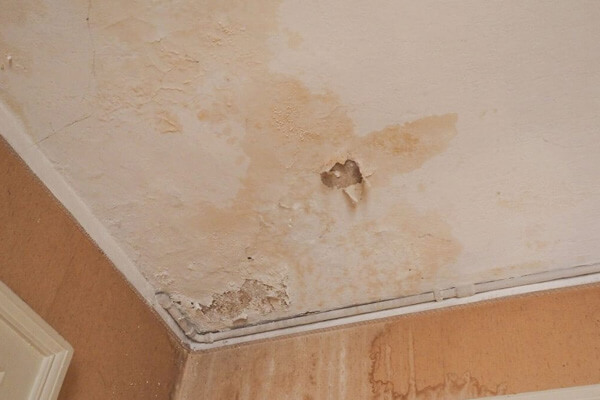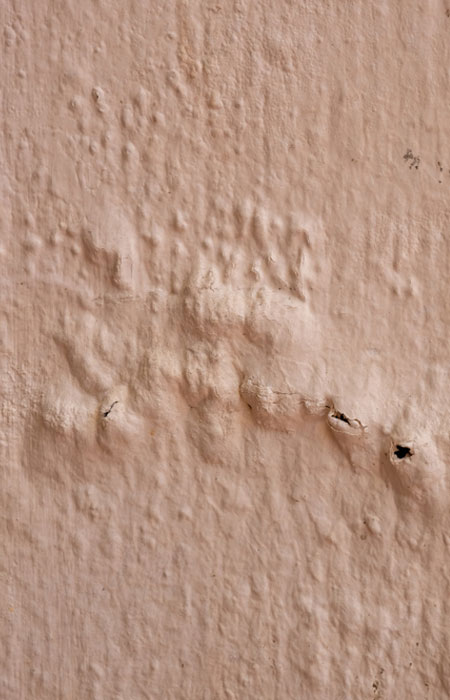What're your concepts on How to Find and Repair Water Leaking in the Wall?

Water stains on wall surfaces are not pleasurable to the eyes. In some cases it appears virtually inevitable to experience water stains on wall surfaces in houses.
Home owners living in humid regions constantly deal with the anxiety of water stains on wall surfaces. With precise and also well-shaped details on the reasons of water spots and also punctual repair service procedures, you will always be an action ahead of such occurrences.
3 Common Reasons For Water Stains on Walls
Contrary to common belief, water stains on wall surfaces do not constantly come from poor structure materials. There are numerous root causes of water discolorations on walls. These consist of:
Moist
When hot wet air meets completely dry chilly air, it triggers water beads to base on the wall surfaces of structures. This happens in bathroom and kitchens when there is steam from food preparation or showers. The water beads can discolor the bordering walls in these parts of your home and spread to various other areas.
Wet or condensation affects the roof covering and walls of buildings. When the wall is wet, it creates a suitable atmosphere for the growth of germs and fungi.
Poor Water drainage
This will certainly avoid water from permeating into the wall surfaces. This web links to excessive wetness that you see on the wall surfaces of your building.
So, the leading root cause of damp wall surfaces, in this instance, can be an inadequate water drainage system. It can likewise be due to bad management of sewer pipelines that run through the structure.
Pipe Leaks
Many homes have a network of water pipes within the walls. It always boosts the viability of such pipes, as there is little oxygen within the wall surfaces.
A drawback to this is that water leak affects the wall surfaces of the structure and also triggers extensive damage. A telltale sign of defective pipelines is the appearance of a water stain on the wall.
Pro Idea
A houseplant in your house additionally raises its moisture. So, if your house is currently moist, you might want to introduce houseplants with minimal transpiration. An instance of suitable houseplants is succulents.
Water Stains on Wall: Repair Tips
When dealing with water discolorations, property owners would normally want a fast fix. Yet, they would quickly understand this is counterproductive as the water spots reoccur. So, here are a few useful suggestions that will guide you in the repair work of water stains on walls:
- Always deal with the reason for water spots on walls
- Involve the help of specialist repair service solutions
- Technique routine cleanliness as well as clear out clogged up sewer system
- When building a home in a water logged area, make certain that the workers perform appropriate grading
- Tiling areas that are prone to high condensation, such as the kitchen and bathroom, assists in lowering the build-up of moist
- Dehumidifiers are likewise useful in maintaining the moisture levels at bay
Conclusion
No one wants to have water stains on walls in their house, it can occur to the ideal of us. This write-up provides you utilize, as you now know exactly how to handle this accident if it does take place.
It is always best to recruit specialist services to help deal with the problems in your home.
In some cases it seems virtually unavoidable to experience water discolorations on walls in houses.
Contrary to prominent idea, water stains on wall surfaces do not constantly stem from poor building materials. There are numerous causes of water spots on walls. The water droplets can discolor the surrounding walls in these components of your house and spread to other locations.
Right here are a couple of handy tips that will guide you in the repair of water spots on walls:
How to Remove Water Stains From Your Walls Without Repainting
The easy way to get water stains off walls
Water stains aren’t going to appear on tile; they need a more absorbent surface, which is why they show up on bare walls. Since your walls are probably painted, this presents a problem: How can you wash a wall without damaging it and risk needing to repait the entire room?
According to Igloo Surfaces, you should start gently and only increase the intensity of your cleaning methods if basic remedies don’t get the job done. Start with a simple solution of dish soap and warm water, at a ratio of about one to two. Use a cloth dipped in the mixture to apply the soapy water to your stain. Gently rub it in from the top down, then rinse with plain water and dry thoroughly with a hair dryer on a cool setting.
If that doesn’t work, fill a spray bottle with a mixture of vinegar, lemon juice, and baking soda. Shake it up and spray it on the stain. Leave it for about an hour, then use a damp cloth to rub it away. You may have to repeat this process a few times to get the stain all the way out, so do this when you have time for multiple hour-long soaking intervals.
How to get water stains out of wood
Maybe you have wood paneling or cabinets that are looking grody from water stains too, whether in your kitchen or bathroom. Per Better Homes and Gardens, you have a few options for removing water marks on your wooden surfaces.
- You can let mayonnaise sit on your stain overnight, then wipe it away in the morning and polish your wood afterward.
- You can also mix equal parts vinegar and olive oil and apply to the stain with a cloth, wiping in the direction of the grain until the stain disappears. Afterward, wipe the surface down with a clean, dry cloth.
- Try placing an iron on a low heat setting over a cloth on top of the stain. Press it down for a few seconds and remove it to see if the stain is letting up, then try again until you’re satisfied. (Be advised that this works best for still-damp stains.)
https://lifehacker.com/how-to-remove-water-stains-from-your-walls-without-repa-1849742925

I recently found that content on when doing a search on the web. Liked our post? Please share it. Let somebody else find it. Kudos for your time. Come back soon.
Schedule And Pricing
Comments on “Stains from Water on Wall Surfaces: Examining and Fixing Methods”